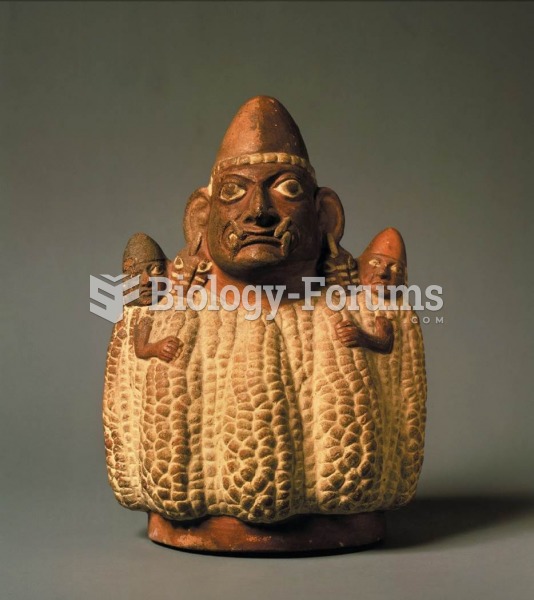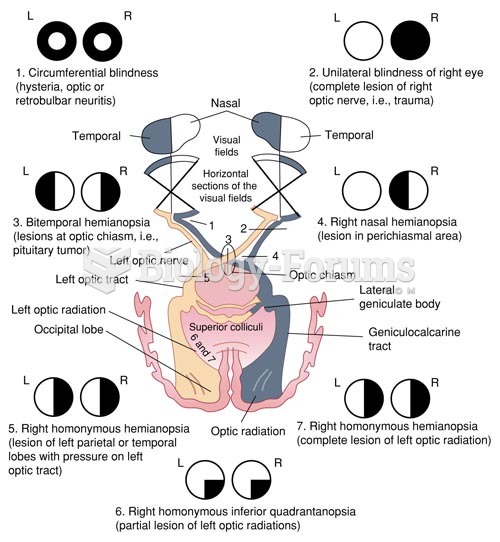|
|
|
Before a vaccine is licensed in the USA, the Food and Drug Administration (FDA) reviews it for safety and effectiveness. The CDC then reviews all studies again, as well as the American Academy of Pediatrics and the American Academy of Family Physicians. Every lot of vaccine is tested before administration to the public, and the FDA regularly inspects vaccine manufacturers' facilities.
In most climates, 8 to 10 glasses of water per day is recommended for adults. The best indicator for adequate fluid intake is frequent, clear urination.
Bacteria have flourished on the earth for over three billion years. They were the first life forms on the planet.
For pediatric patients, intravenous fluids are the most commonly cited products involved in medication errors that are reported to the USP.
Dogs have been used in studies to detect various cancers in human subjects. They have been trained to sniff breath samples from humans that were collected by having them breathe into special tubes. These people included 55 lung cancer patients, 31 breast cancer patients, and 83 cancer-free patients. The dogs detected 54 of the 55 lung cancer patients as having cancer, detected 28 of the 31 breast cancer patients, and gave only three false-positive results (detecting cancer in people who didn't have it).
 A statue of a corn goddess of the Moche peoples of coastal Peru, around 400 BP. Within several centu
A statue of a corn goddess of the Moche peoples of coastal Peru, around 400 BP. Within several centu
 Every culture has funeral rituals that help its members mark the passing of one of their own and ...
Every culture has funeral rituals that help its members mark the passing of one of their own and ...
 A visual inspection on this battery showed that the electrolyte level was below the plates in all ...
A visual inspection on this battery showed that the electrolyte level was below the plates in all ...




